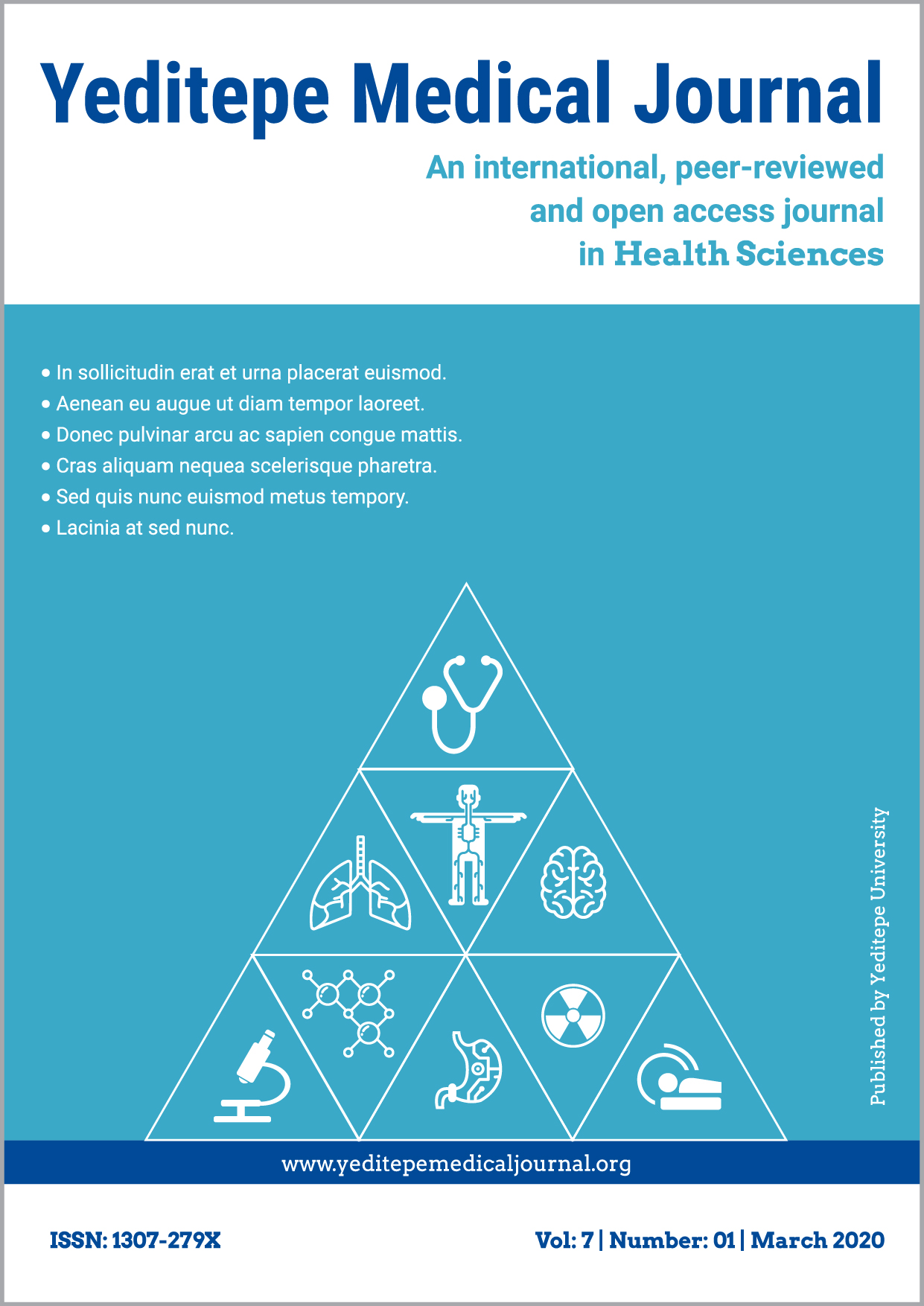EPIDEMIOLOGIC CHARACTERISTICS OF GERIATRIC OSTEOPOROTIC HIP FRACTURES AND PATIENT OUTCOME
Beliz Bilgili1, Murat Haliloglu1, Kadir Karismaz2, Bulent Tanriverdi3, Mehmet Erkilinc3, Cevdet Avkan31Marmara University School of Medicine, Department of Anesthesiology and Reanimation, Istanbul, Turkey2Marmara University School of Medicine, Department of Intensive Care, Internal Medicine, Istanbul, Turkey
3Bakırkoy Sadi Konuk Teaching and Research Hospital, Department of Orthopaedics and Traumatology, Istanbul, Turkey
Introduction: Osteoporotic hip fractures have become a current major problem with increasing life expectancy. In order to decrease morbidity and mortality, preventive measures and early health care interventions are very important. The aim of this study is to present the epidemiologic profile of the geriatric proximal femur fractures and to specify and determine the factors that effect the patient outcomes. Materials and Methods: The patients aged over 65 with hip fractures have been included in this retrospective, observational study. The factors regarding demographic features, fracture types, treatment outcomes, time to surgery, comorbidities, red blood cell transfusion requirement, intensive care unit admission, the length of anesthesia and the operation have been investigated. Results: Eight hundred sixty-four (571 female, 293 male) have been included in the study. The average age of the patients was 81,6. The most frequent comorbidity was hypertension (464 patients, 53%), 829 patients were diagnosed as osteoporosis according to Singh index, sixty-six patients (7,6%) were died during the 1 month period. Whereas the one year mortality rate was 28,5% (246 patient), the overall mortality rate was 38%. Age, collum femoris fracture, accompanying pulmonary diseases and central nervous system diseases, delayed time to surgery and intensive care admission increase 1-year mortality. Conclusion: With an increased proportion of elderly individuals in the general population, the number of elderly hip fracture patients continue to increase. In order to minimize complications, geriatric hip fracture patients should be operated on as soon as possible, and a multidisciplinary treatment process should be planned precisely.
Keywords: Elderly, Hip fracture, MortalityGERİATRİK OSTEOPOROTİK KALÇA KIRIKLARINDA EPİDEMİYOLOJİ VE HASTA SONUÇLARI
Beliz Bilgili1, Murat Haliloglu1, Kadir Karismaz2, Bulent Tanriverdi3, Mehmet Erkilinc3, Cevdet Avkan31Marmara University School of Medicine, Department of Anesthesiology and Reanimation, Istanbul, Turkey2Marmara University School of Medicine, Department of Intensive Care, Internal Medicine, Istanbul, Turkey
3Bakırkoy Sadi Konuk Teaching and Research Hospital, Department of Orthopaedics and Traumatology, Istanbul, Turkey
Amaç: Beklenen yaşam süresindeki artışla birlikte osteoporotik kalça kırıkları ciddi bir sorun olarak karşımıza çıkmaktadır. Mortalite ve morbiditenin azaltılabilmesi için önleyici tedbirler ve erken evre tedavi çok önemlidir. Bu çalışmada geriatrik proksimal femur kırıklı hastaların epidemiyolojik profilini ortaya koymak ve tedavi sonucunu belirleyen faktörlerin saptanması amaçlandı. Materyal ve Method: Altmış beş yaş üstü kalça kırıklı hastalar retrospektif, gözlemsel olarak planlanan bu çalışmaya dahil edildi. Hastaların demografik özellikleri, kırık tipleri, tedavi sonuçları ve sağ kalım üzerine etki eden faktörler araştırıldı. Bulgular: Çalışmaya 864 hasta (571 kadın, 293 erkek) dâhil edildi. Hastaların ortalama yaşı 81,6 olarak hesaplandı. En sık eşlik eden hastalık hipertansiyondu (464 hasta, %53). Singh indeksiyle yapılan değerlendirmede 829 hastaya osteporoz tanısı konuldu. Bir ay içerisinde 66 hasta (%7,6), bir yıl içerisinde ise 246 hastanın (%28,5) öldüğü tespit edildi. Toplam mortalite oranı ise %38 olarak hesaplandı. Yaş, kollum femoris kırığı, eşlik eden pulmoner ve santral sinir sistemi varlığı, ameliyata dek geçen süre ve yoğun bakım ünitesi ihtiyacının 1 yıllık mortaliteyi arttırdığı tespit edildi. Sonuç: Genel populasyondaki yaşlı hasta sayısının artmasına paralel olarak geriatrik kalça kırıklı hasta sayısı da artış göstermektedir. Komplikasyonların önlenebilmesi için bu hasta grubu mümkün olan en kısa süre içerisinde ameliyat edilmeli ve multidisipliner yaklaşımla tedavi süreci kusursuz bir şekilde planlanmalıdır.
Anahtar Kelimeler: Yaşlı, Kalça kırığı, MortaliteManuscript Language: English


